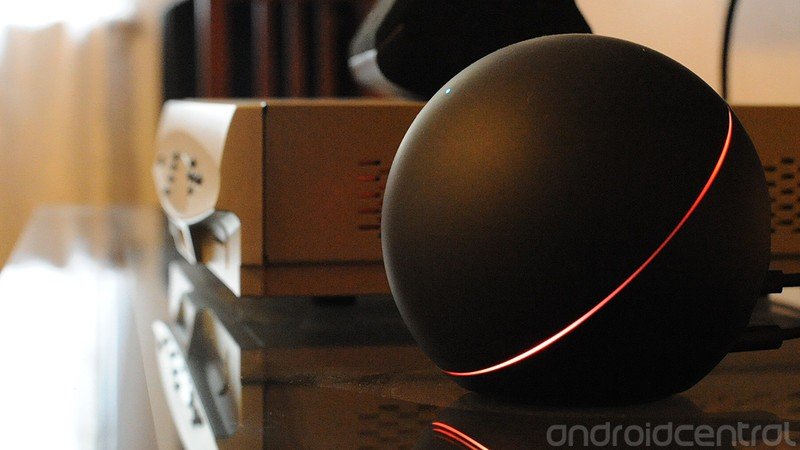The Nexus Q was the weirdest Android device ever made, but led Google to far better products

It's June 2012, and Google is a very different company. Android 4.0 Ice Cream Sandwich was the latest and greatest, the original Chromecast was still a year from launching, Android TV was two years away, and the Google Home wouldn't launch for two more years after that. At its yearly Google I/O developer conference, Google announces a completely baffling device: the Nexus Q.
For those who haven't been around the Android world for that long, you will have absolutely no idea what the Nexus Q was. And even if you do know about the Nexus Q, you probably never saw or used one.
First, the basics: the Nexus Q was a media streamer designed to connect to your home theater and be controlled remotely by phone apps — it had no interface of its own, other than the ability to rotate the top of the sphere for volume and tap it for play/pause. This shot put-like orb was particularly unique because it didn't fit in to any traditional mold of home theater equipment — and that was the point. It was big, matte black, spherical, and heavy — and an LED ring changed colors to give you status information.
From a nerdy perspective, it's even more interesting when you look at what was inside: this thing ran Android! The then state-of-the-art Android 4.0 Ice Cream Sandwich, actually — and it did so with a smartphone-style dual-core processor, 1GB of RAM, and 16GB of storage. This intriguing little cannonball was also packed with connectivity: Wi-Fi, ethernet, micro HDMI, optical audio, and banana plugs for analog audio.
But despite all of that power and connectivity, the Nexus Q did just three things: played Google Play Music, Google Play Movies & TV, and YouTube. Yes, that's it. Now the way it played media was novel for the time, though — rather than use an interface and remote on the Nexus Q itself, you simply used the Play Music, Play Moves & TV, and YouTube apps on your phone to queue up content. Everyone in the room could see and add to the queue, with the goal of having a fun and collaborative media experience.
The Nexus Q was overbuilt, barely capable, and very expensive — but it was wonderful.
We knew the Nexus Q was ... not a great product, even at the time. All of that incredibly over-built hardware was expensive. At $300, the same price the Nexus 4 would debut for later that year, the Nexus Q had effectively zero potential market. But we still loved it because it was completely over-engineered for everything it did, used Android in an entirely new way, and had so much promise as a concept. It was a very "Google" product.
In May 2013, less than a year after being unveiled, and with having never officially gone on sale, Google completely ended support for the product. A tiny number of Nexus Qs ever made their way out into the world, either from giveaways at Google I/O or a small number of people who pre-ordered them and were refunded their money as a consolation.
Get the latest news from Android Central, your trusted companion in the world of Android
But the Nexus Q died so that dramatically better future products could live. As I noted from the start, we can see the DNA of the Nexus Q live on in other incredibly successful products. The first Chromecast, which revolutionized the world of media streaming, clearly built on the Nexus Q's idea of a headless media player and content queueing from a variety of devices. Android TV took over the other side of the equation, with a dedicated media player and more power. And you can even draw the lineage of the original Google Home back to the Nexus Q a well, both from the interface-free Casting experience and physical input mechanisms of rotating and tapping the surface.
There was probably no time or world in which the Nexus Q could have launched and been successful, even if Google really enhanced the experience and executed on the potential of the device. But it still holds a special place in the hearts of early Android enthusiasts, and its legacy can be found throughout Google products today regardless of whether people actually remember it.

Andrew was an Executive Editor, U.S. at Android Central between 2012 and 2020.


